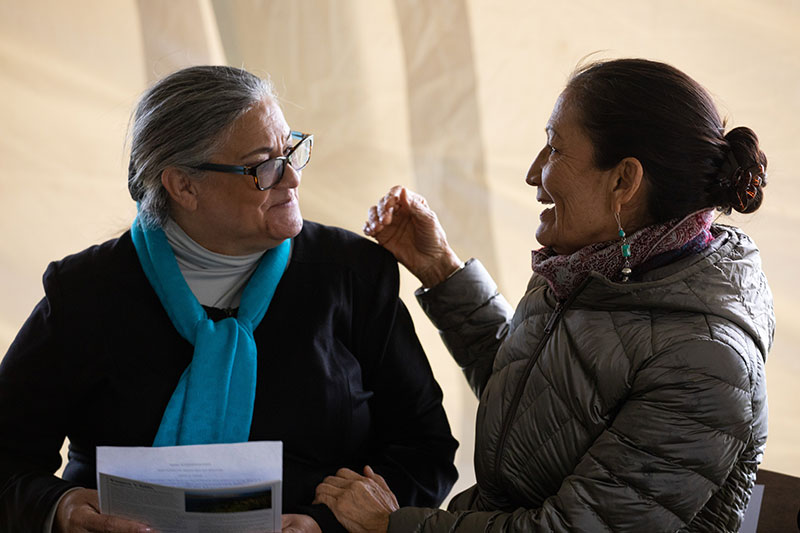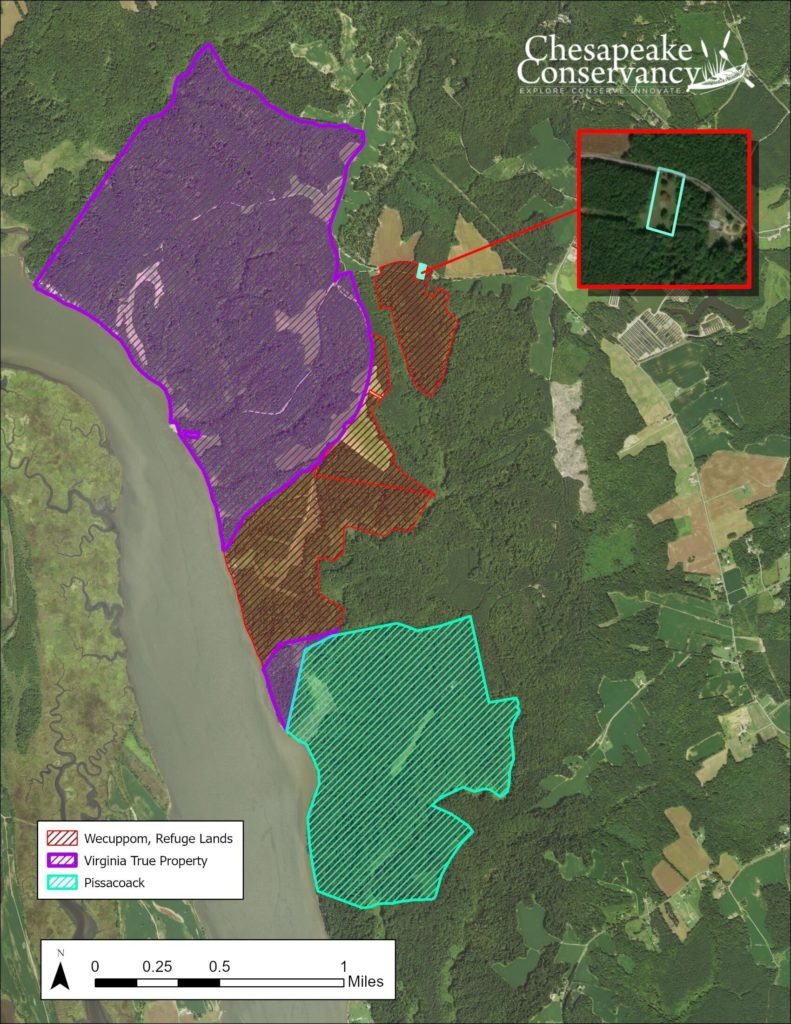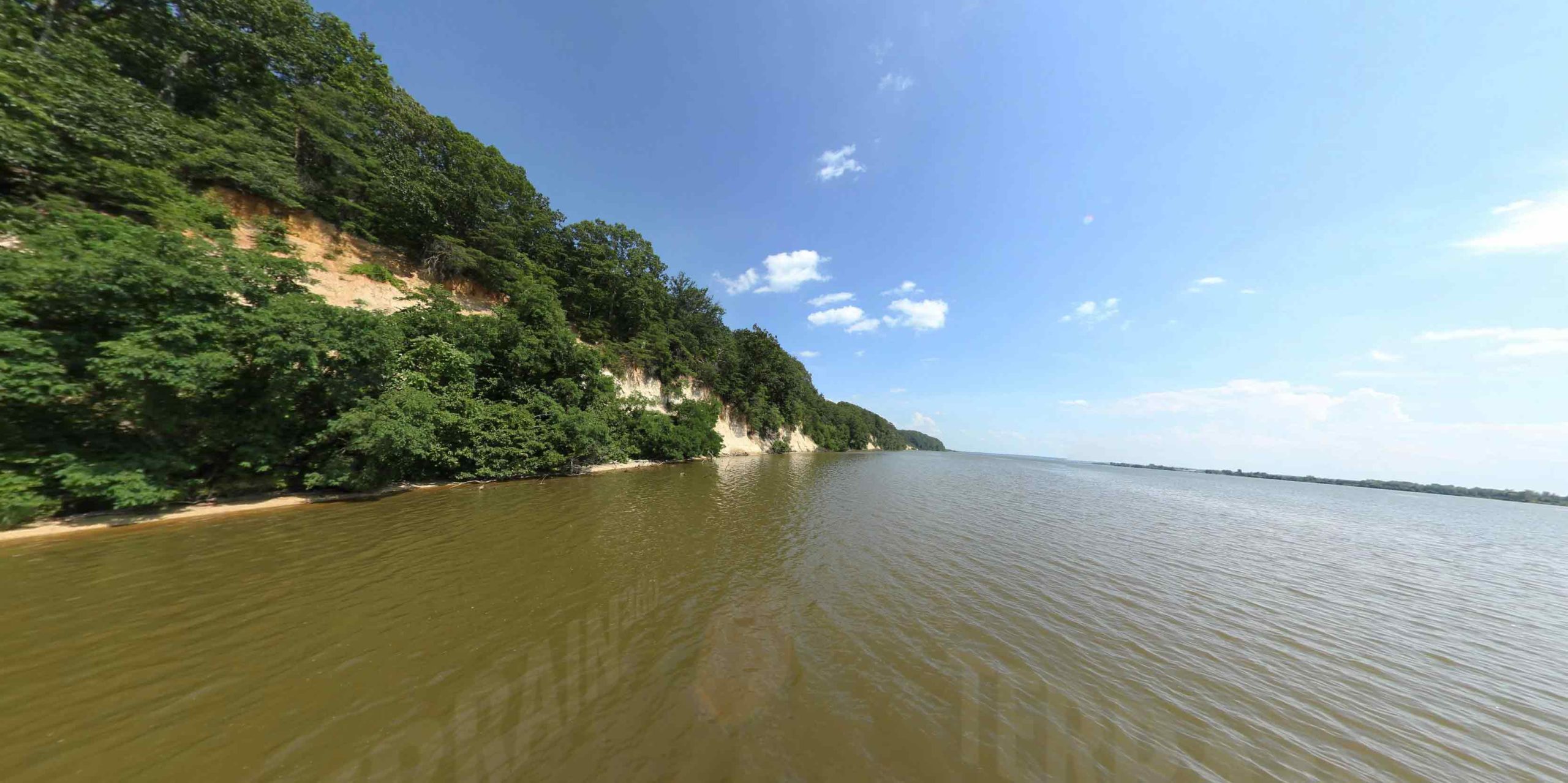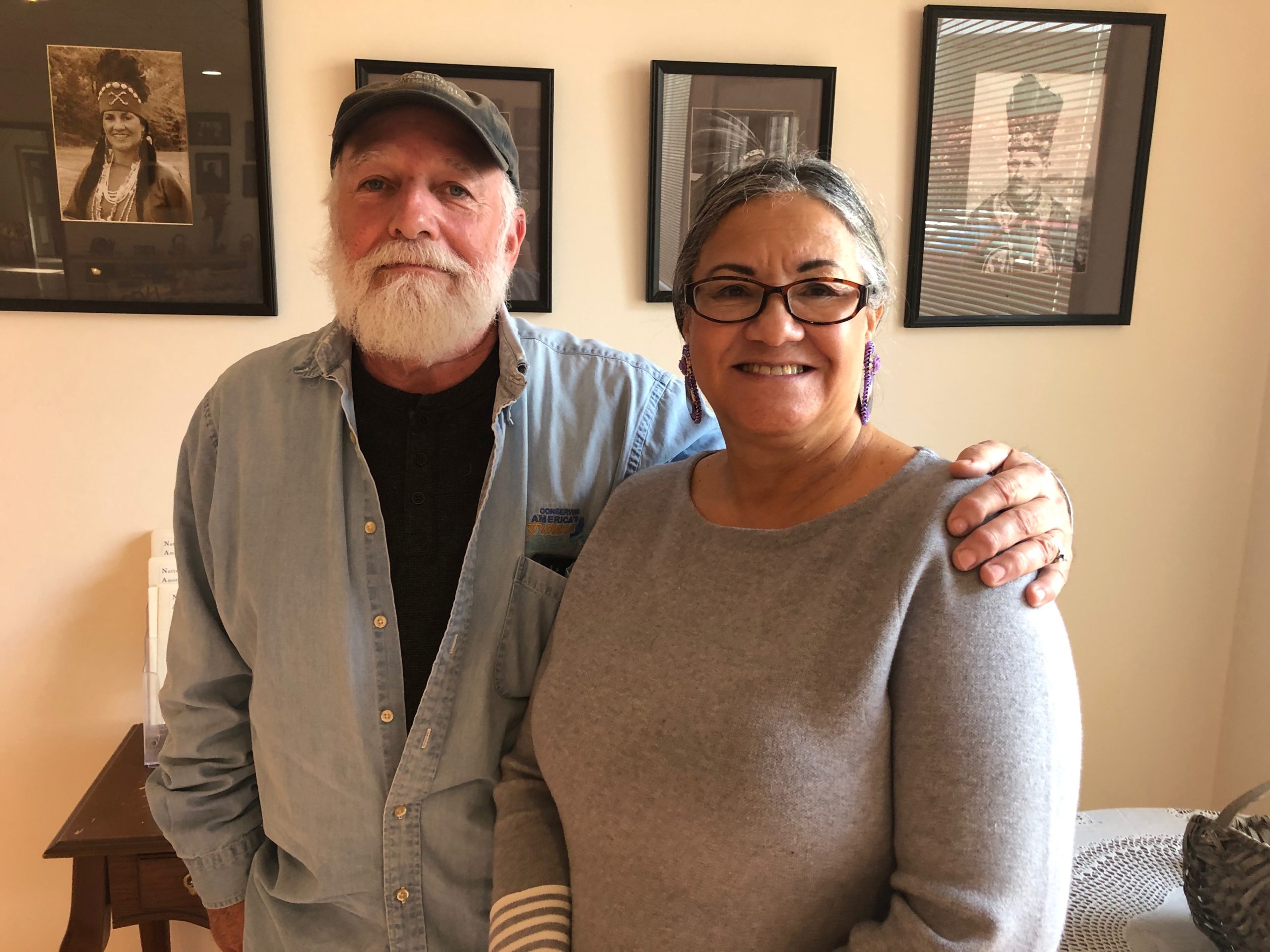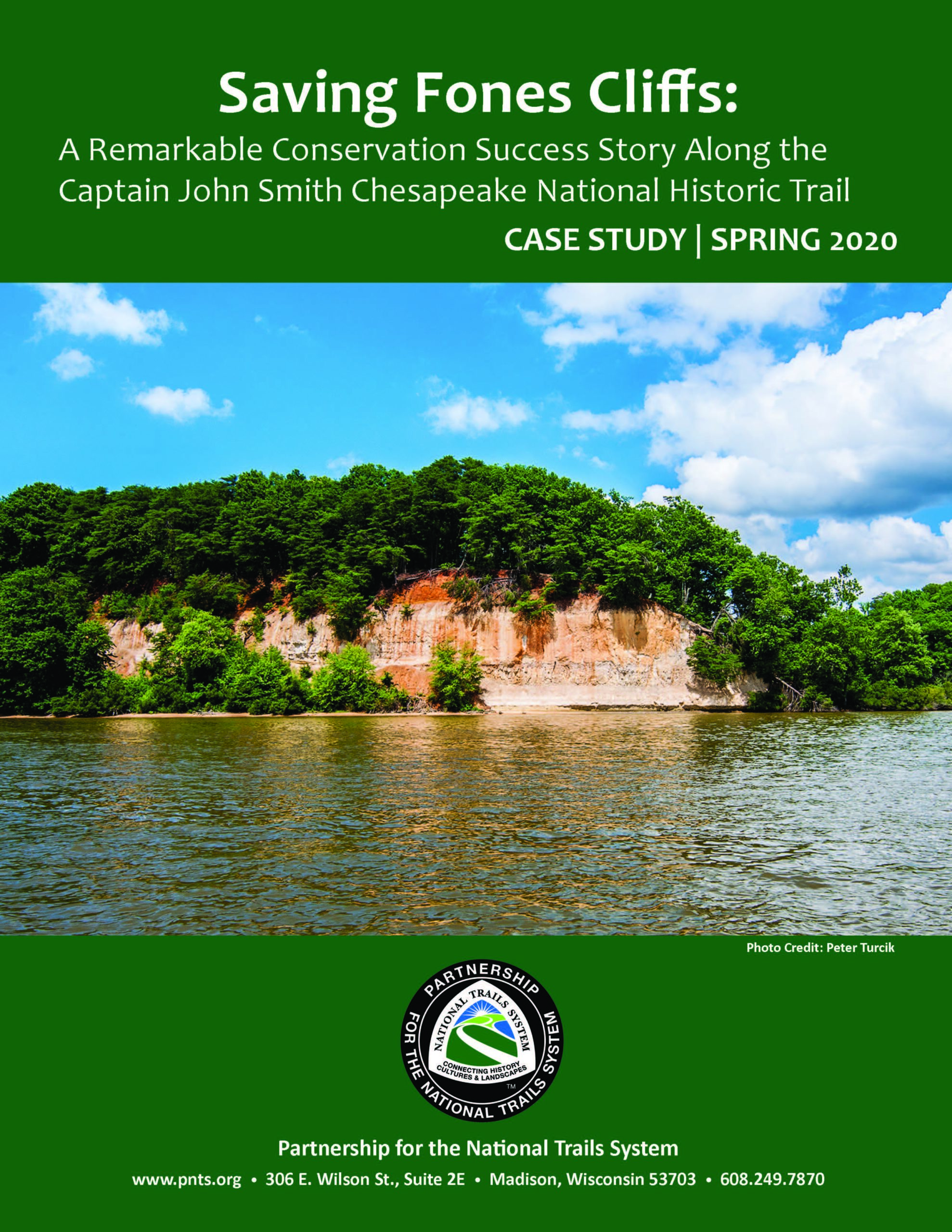The Rappahannock Tribe’s Return to the River
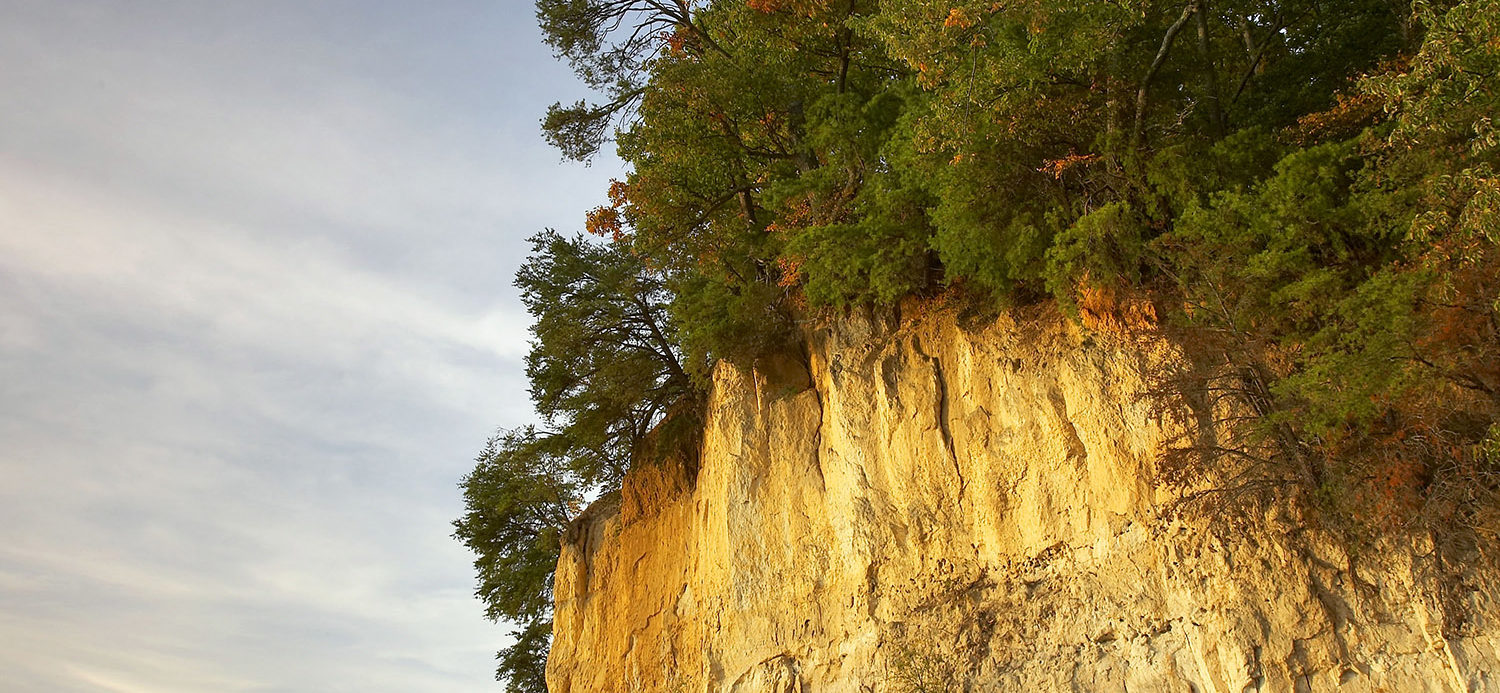
Fones Cliffs Conservation
Fones Cliffs is a stunning 4-mile stretch of white-colored diatomaceous cliffs rising more than 100 feet above the Rappahannock River in Virginia. This nearly pristine and majestic site is the ancestral home of the Rappahannock Tribe and has been designated by the National Audubon Society as an Important Bird Area with global significance for resident and migratory bald eagles and other migratory birds. This largely unspoiled landscape is a place of both natural and cultural importance and is a key feature along the Chesapeake Trail.
Prior to contact with the English, the Rappahannock Tribe lived in at least three villages on the Cliffs–– Wecuppom, Matchopick and Pissacoack. Fones Cliffs is where the Tribe first encountered and defended their homeland against English settler Captain John Smith during his explorations in 1608.
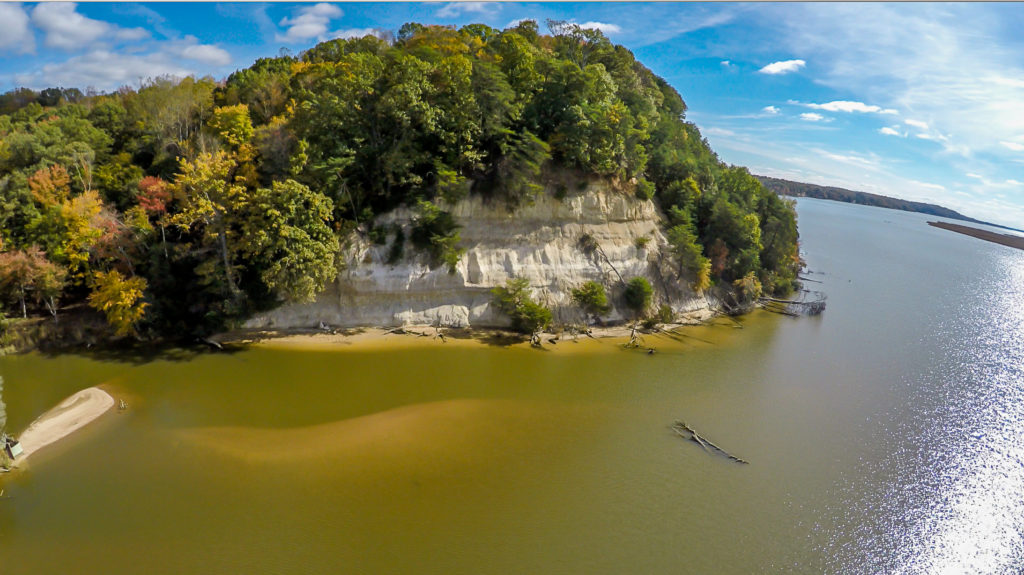 Photo by Jeffrey Allenby/Chesapeake Conservancy
Photo by Jeffrey Allenby/Chesapeake Conservancy
Rappahannock Tribe Chief Anne Richardson (left) with Department of the Interior Secretary Deb Haaland at the Return to the River Celebration on April 1, 2022. Photo by Will Parson/Chesapeake Bay Program
“We have worked for many years to restore this sacred place to the Tribe. With eagles being prayer messengers, this area where they gather has always been a place of natural, cultural and spiritual importance.”
– Rappahannock Tribe Chief Anne Richardson.
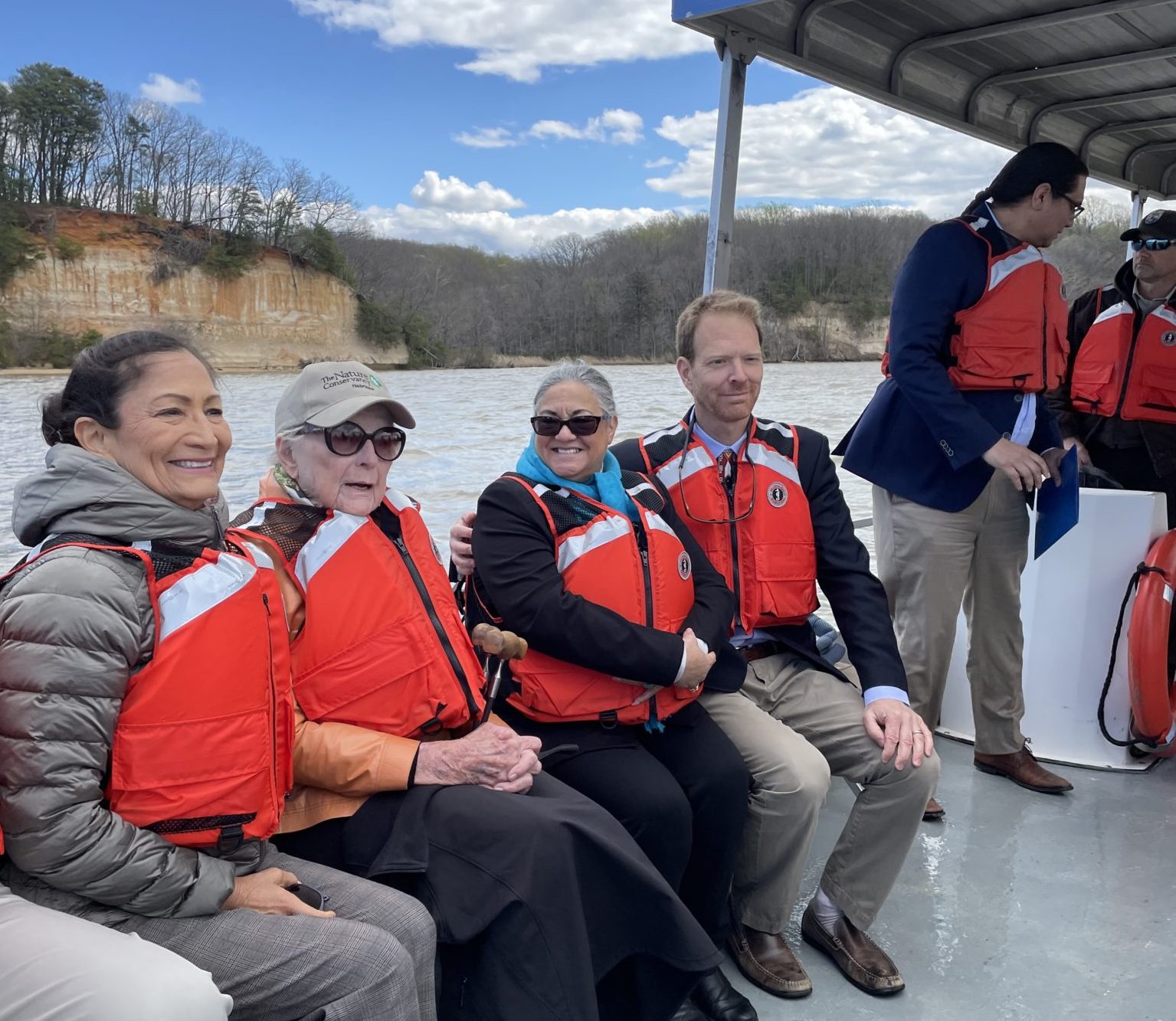
Left to right: U.S. Department of the Interior Secretary Deb Haaland, Dr. Carol Angle, Rappahannock Chief Anne Richardson, Chesapeake Conservancy President & CEO Joel Dunn. Photo by Randall Larrimore/Chesapeake Conservancy
On April 1, 2022, at an event with U.S. Department of the Interior Secretary Deb Haaland, the Rappahannock Tribe announced that it had re-acquired 465 acres at Fones Cliffs, a sacred site to the Tribe located on the eastern side of the Rappahannock River, and restored its original name of Pissacoack.
“We have worked for many years to restore this sacred place to the Tribe. With eagles being prayer messengers, this area where they gather has always been a place of natural, cultural and spiritual importance,” said Rappahannock Tribe Chief Anne Richardson.
The land will be publicly accessible and held with a permanent conservation easement conveyed to the U.S. Fish and Wildlife Service (USFWS). Chesapeake Conservancy donated the easement to the USFWS, then donated the fee title to the Rappahannock Tribe, which intends to place the land in Trust with the Bureau of Indian Affairs. The Tribe plans trails and a replica 16th-century village, where tribal members can educate the public about their history and Indigenous approaches to conservation and connect future generations of Rappahannock youth to their tribal traditions and the river which bears their name.
“Through the generosity of the family of William Dodge Angle, M.D., Chesapeake Conservancy is honored to facilitate the return of Fones Cliffs to the Tribe, and to partner with them to bring Indigenous-led conservation practices back to the Rappahannock River,” said Chesapeake Conservancy President and CEO Joel Dunn. “This is a significant step forward in the overall goal to save approximately 2,000 acres at Fones Cliffs, a haven for wildlife and waterfowl and one of the most beautiful places in the Chesapeake and, in fact, the world.”
Additional funding for land for the Rappahannock Tribe was also made possible by a grant from the National Fish and Wildlife Foundation through Walmart’s Acres for America Program.
In addition, the land offers opportunities for the Tribe to expand their Return to the River program, which trains tribal youth in traditional river knowledge and practices and conducts outreach and education for other communities interested in the Rappahannock River. In 2017, through the generosity of Ms. Virginia Warner, Chesapeake Conservancy facilitated the donation of a single acre of land near Fones Cliffs, which the Tribe uses as a staging area for the program.
In June 2019, partners gathered to celebrate the protection of 252 acres which were added to the Rappahannock River Valley National Wildlife Refuge for permanent protection thanks to funding from the Land and Water Conservation Fund that Chesapeake Conservancy helped to secure. Thanks to The Conservation Fund and the United States Fish and Wildlife Service, this parcel, referred to by the Tribe as its original name of Wecuppom, is now protected from development and will add opportunities for hiking and bird-watching.
Nearby Land Along Fones Cliffs Still Under Threat of Development
Even as this tremendous success at Pissacoack is celebrated, now is not the time for complacency. A nearby 968 acres (owned by Virginia True Corporation headquartered in New York) that adjoin Refuge property (referred to by the Tribe as Wecuppom) remain unprotected and vulnerable.
In 2015, the Virginia True Corporation received preliminary approval for a massive resort subdivision, complete with an 18-hole golf course, hundreds of condos and single-family homes, lodge, restaurant, stables and more. Three years later, the developers illegally cleared 13 acres to bare ground, in violation of state and county laws. The resulting erosion caused trees at the top of the cliffs to fall and the cliff face to slough off into the Rappahannock River.
In 2019, the company filed for bankruptcy protection, and the case remains unresolved. While the resort proposal appears thankfully dead, the property remains unprotected and therefore at risk.
Chesapeake Conservancy and other conservation partners are vigilantly tracking the bankruptcy proceedings such that a conservation outcome can be brought to bear. There is so much at stake for the Tribe, for the Refuge, for eagles and other wildlife, for water quality and for the Chesapeake that we must continue to work for its ultimate protection. Please help us save these 968 acres and donate today.
Timeline
2021
Chesapeake Conservancy was introduced to the family of William Dodge Angle, M.D. by The Wilderness Society. Soon after, the Angles offered to provide the funds necessary to purchase 465 acres offered for sale to the Tribe in 2019.
Additional funding for land for the Rappahannock Tribe was also made possible by a grant from the National Fish and Wildlife Foundation through Walmart’s Acres for America Program to the Tribe.
The Commonwealth of Virginia officially designated a large section of the lower Rappahannock, including the 4-mile stretch of Fones Cliffs, as a state scenic river.
2018
The Rappahannock Indians of Virginia are federally recognized by an act of Congress.
Virginia True developers illegally cleared 13 acres to bare ground, in violation of state and county laws. The resulting erosion caused trees at the top of the cliffs to fall and the cliff face to slough off into the Rappahannock River.
2017
Through the generosity of Ms. Virginia Warner, Chesapeake Conservancy facilitated the donation of a single acre of land near Fones Cliffs, which the Tribe uses as a staging area for their Return to the River Program.
2016
Researchers with St. Mary’s College of Maryland work with the Rappahannock Tribe to complete the study, “Defining the Rappahannock Indigenous Cultural Landscape for the Rappahannock Tribe, the National Park Service and Chesapeake Conservancy
2014
The ecological significance of the Fones Cliffs stretch of the Rappahannock was reaffirmed by the Virginia Marine Resources Commission.
2006
The U.S. Congress establishes the Captain John Smith Chesapeake National Historic Trail, which includes the Rappahannock River and Fones Cliffs.
1998
Chief Anne Richardson elected Chief of the Rappahannock Tribe. She is the first woman to lead a tribe in Virginia since the 18th century.
1660s
The beginnings of forced removal of the Rappahannock Tribe from their ancestral homeland on the Rappahannock River.
1640s
According to the Rappahannock Tribe, English settlement in the Rappahannock River valley began illegally in the 1640s.
1607
The Rappahannocks first met Captain John Smith in December 1607 at their capital town “Topahanocke” on the banks of the river bearing their name.
The Future
Chesapeake Conservancy and conservation partners continue their tireless pursuit to conserve the 968 Virginia True property. Virginia True remains in bankruptcy. Learn how you can help our efforts.
At Pissacoack, the Rappahannock Tribe plans trails and a replica 17th-century village, where tribal members can educate the public about their history and Indigenous approaches to conservation and connect future generations of Rappahannock youth to their tribal traditions and the river which bears their name.
2022
465 acres are returned to the Rappahannock Tribe, which restores the original name of Pissacoack, made possible by the family of William Dodge Angle, M.D., Chesapeake Conservancy and NFWF. U.S. Department of the Interior Secretary Deb Haaland joins the Return to the River celebration with Chief Anne Richardson and Tribal citizens.
With funding from the family of William Dodge Angle, M.D. Chesapeake Conservancy purchased 465 acres, donated an easement to the USFWS, then donated the fee title to the Rappahannock Tribe, which intends to place the land in Trust with the Bureau of Indian Affairs.
Congress passes an omnibus appropriations bill for Fiscal Year (FY) 2022 that includes a $2 million appropriation from the Land and Water Conservation Fund that is directed toward fee or easement land acquisition for the Refuge via the U.S. Fish and Wildlife Service.
2019
The Tribe celebrates the protection of Wecuppom, 252 acres along Fones Cliffs, purchased for the USFWS as part of the Rappahannock River Valley NWR. USFWS acquired the property from The Conservation Fund using the Land and Water Conservation Fund secured by U.S. Senator Mark Warner and U.S. Representative Rob Wittman at the request of the Chesapeake Conservancy, and as a part of the multi-year Rivers of the Chesapeake campaign.
Virginia True declares bankruptcy, and the fate of their 968 remains unknown. (Virginia True is currently in bankruptcy, and Chesapeake Conservancy and The Conservation Fund are still working to conserve this land).
Another owner of more than 1,100 acres at Fones Cliffs approaches The Rappahannock Tribe with an offer to sell their land. Chesapeake Conservancy and The Conservation Fund partner to appraise the land and secure funds.
2015
968 acres at Fones Cliffs under threat for development. The Virginia True Corporation, headquartered in New York, received preliminary approval for a massive resort subdivision, complete with an 18-hole golf course, hundreds of condos and single-family homes, lodge, restaurant, stables and more. (Virginia True is currently in bankruptcy, and Chesapeake Conservancy and The Conservation Fund are still working to conserve this land).
2007
Massive development proposals begin to threaten Fones Cliffs. A 250-acre riverfront parcel received county approval for a 46-unit subdivision that would have included 22 riverfront lots looming over the cliffs and a 46-slip pier in the river below. (Successfully saved: see 2019, Wecuppom)
1921
Rappahannock Tribe Chief George Nelson rechartered the Tribe under the laws of Virginia as the Rappahannock Indian Association.
1651
The Rappahannocks sold their first piece of land to the English in 1651. However, Rappahannock chiefs and councilmen spent more than ten years in county courts trying to get payment for this and other land sales, according to the Rappahannock Tribe.
1608
The earliest written record of the Rappahannock Tribe and their occupation on the cliffs come from the journals of English explorer John Smith, in which he describes the Tribe’s first recorded defense of their homeland in 1608.
Thousands of Years Before 1607
Indigenous people thrive along the Rappahannock River where later in 1608, explorer John Smith finds three towns called Pissacoack, Matchopick and Wecuppom and 40 other Native towns and hamlets.
Take a Tour of Fones Cliffs
Enjoy this bird’s eye view of Fones Cliffs
Want to Learn More?
Joe McCauley and Chief Anne Richardson. Image credit: Don Owen, Lands Trails and Parks LLC
The Rappahannock Tribe’s Return to the River: Conserving Fones Cliffs
By Joseph McCauley, Chesapeake Fellow
On April 1, 2022, joined by Department of the Interior Secretary Deb Haaland, the Rappahannock Tribe of Virginia celebrated a milestone in their centuries-long quest to return to their homeland along the river that bears their name. With a generous donation from the family of William Dodge Angle, M.D., Chesapeake Conservancy purchased and donated 465 acres of waterfront property in what is now Richmond County, Virginia, to the Tribe, who restored its original name of Pissacoack. Additional funding was made possible by a grant from the National Fish and Wildlife Foundation through Walmart’s Acres for America Program.
The property is located in the heart of an iconic formation of diatomaceous bluffs known locally as Fones Cliffs, famous for its outsized importance to bald eagles and other migratory birds and infamous for the battles to conserve it. [Read more]
Fones Cliff Case Study
There’s still much work to be done. This case study from 2020 takes a look at the successful achievement of conserving 252 acres, a portion Fones Cliffs, representing a huge “win” for the Rappahannock Tribe, the Chesapeake Bay, the Rappahannock River Land Protection Partnership, the U.S. Fish and Wildlife Service’s Rappahannock River Valley National Wildlife Refuge, the Commonwealth of Virginia and the Captain John Smith Chesapeake National Historic Trail.
Thank you to the Partnership for the National Trails System and the U.S. Department of Transportation Federal Highway Administration for producing this case study.
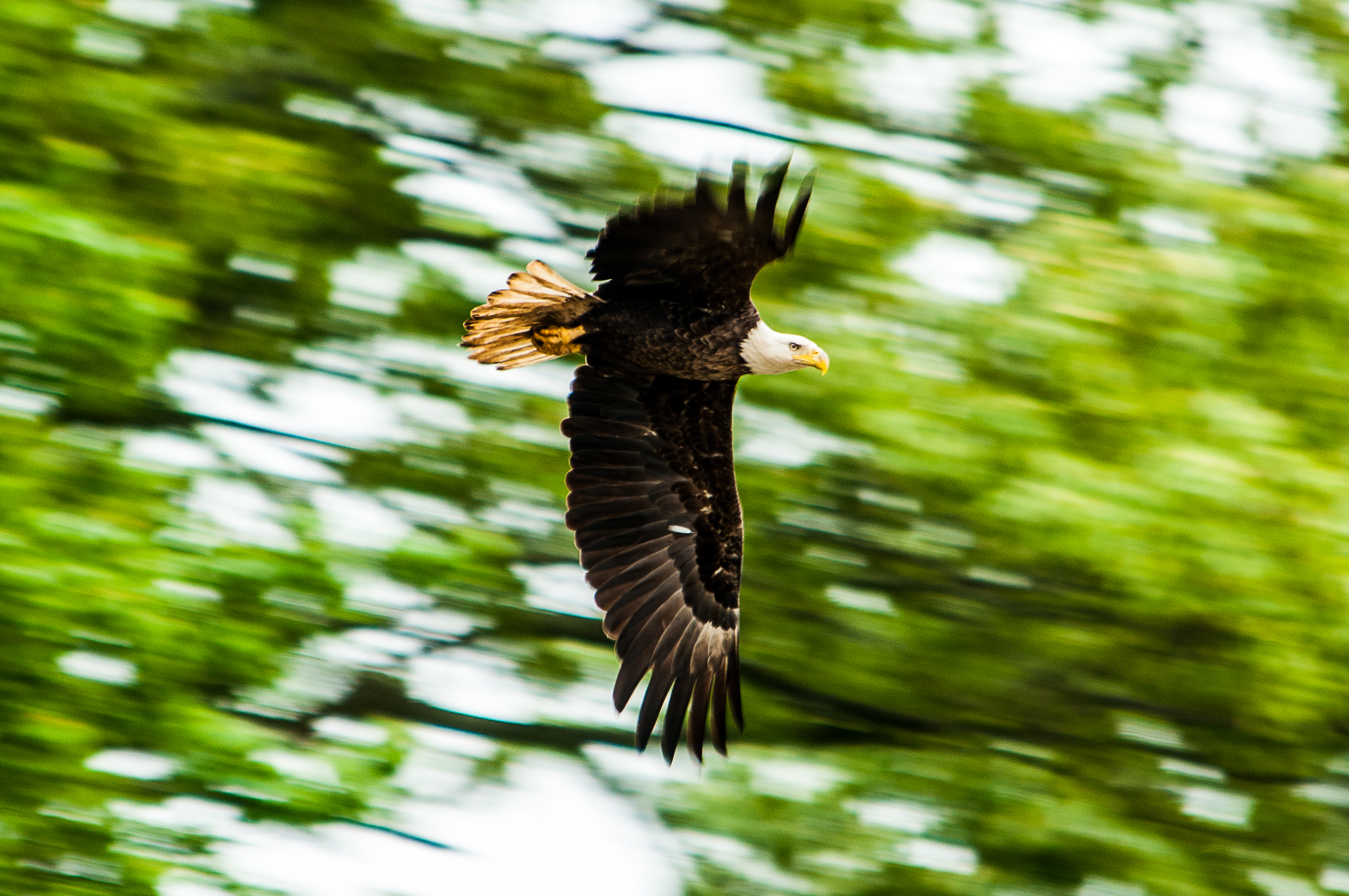
Fones Cliffs provides important habitat for one of the largest concentration of eagles on the East Coast. For this reason, and its importance to other migratory bird species, Fones Cliffs is part of a globally significant Important Bird Area, designated by the Audubon Society.
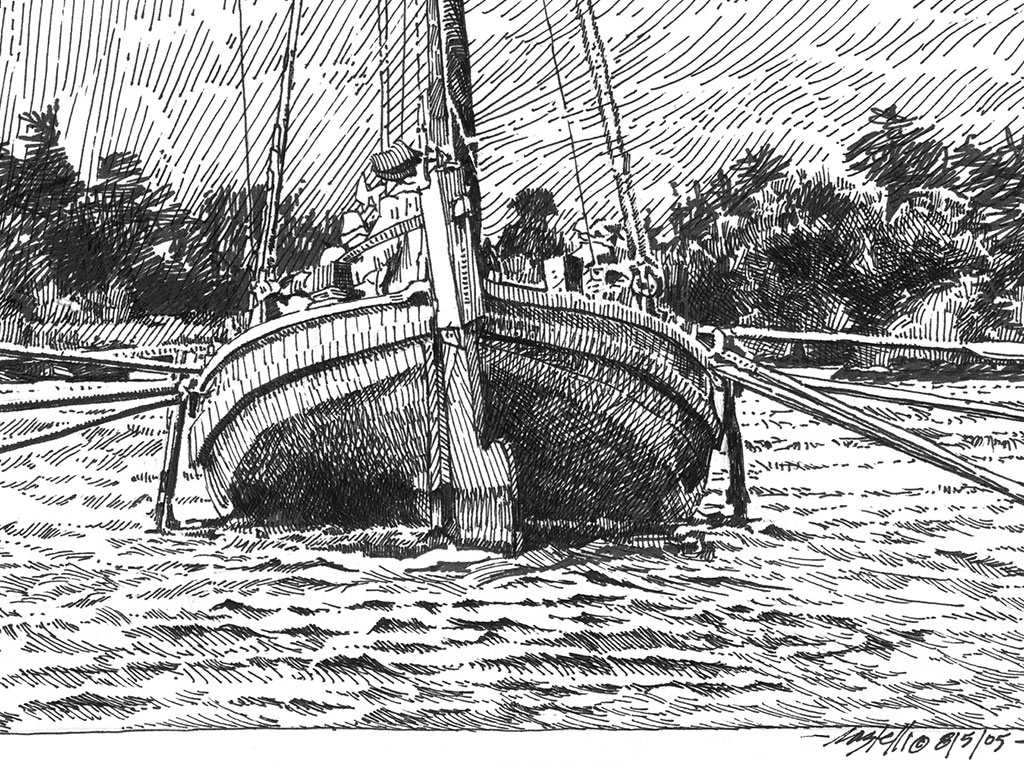
The cliffs also have a rich cultural history. According to the journals of John Smith, Fones Cliffs was the home of three American Indian towns and bore witness to an often-cited not so friendly encounter between the Rappahannock tribe and the Englishmen aboard John Smith’s shallop. This area is a highlight to those exploring history along the Chesapeake Trail and to paddlers traversing the mighty Rappahannock.
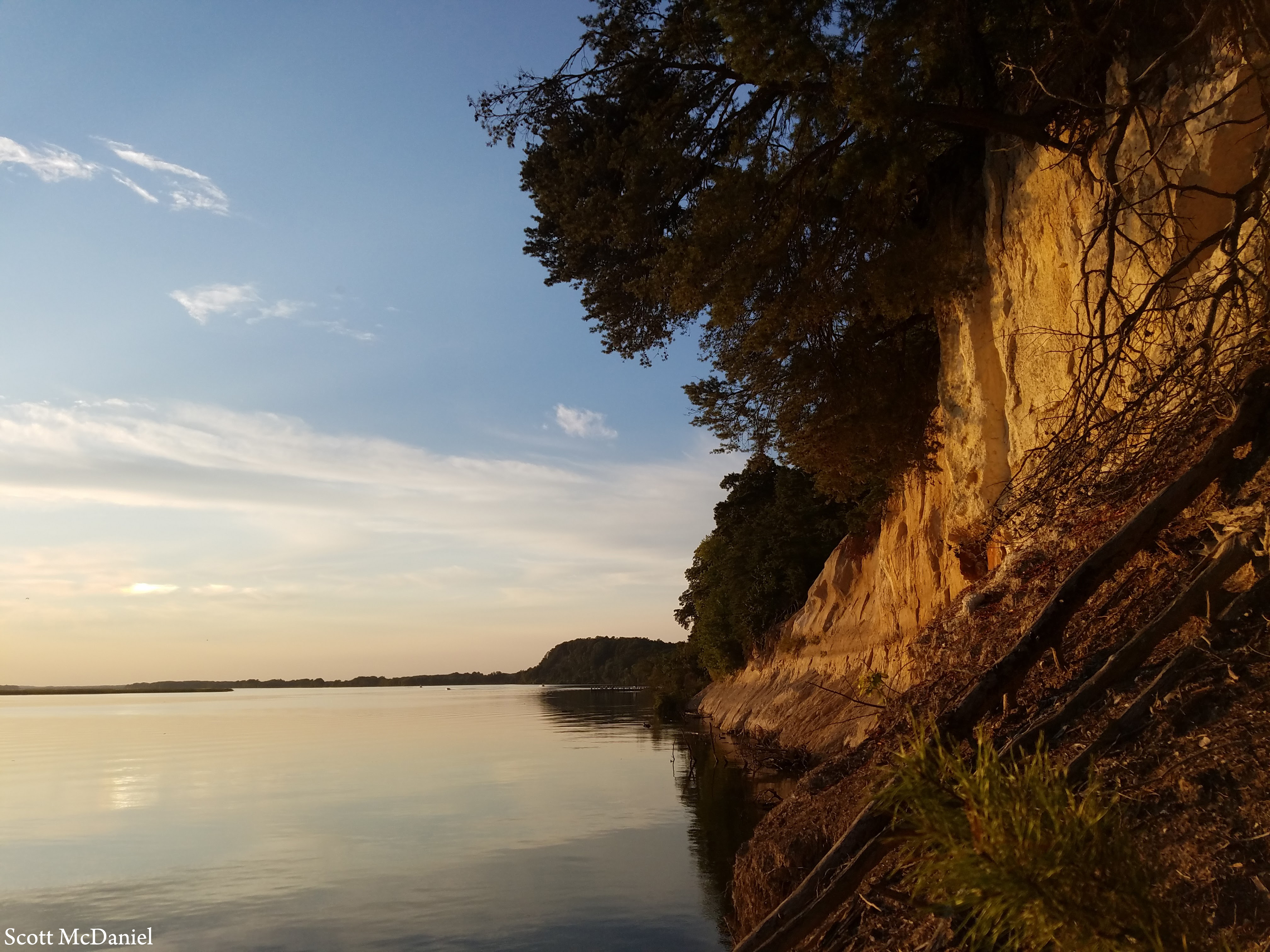
Fones Cliffs is an evocative landscape, offering the public a rare glimpse into the past. The white cliffs, rich heritage, and soaring eagles make this a very special and unique place in the Chesapeake Bay watershed.
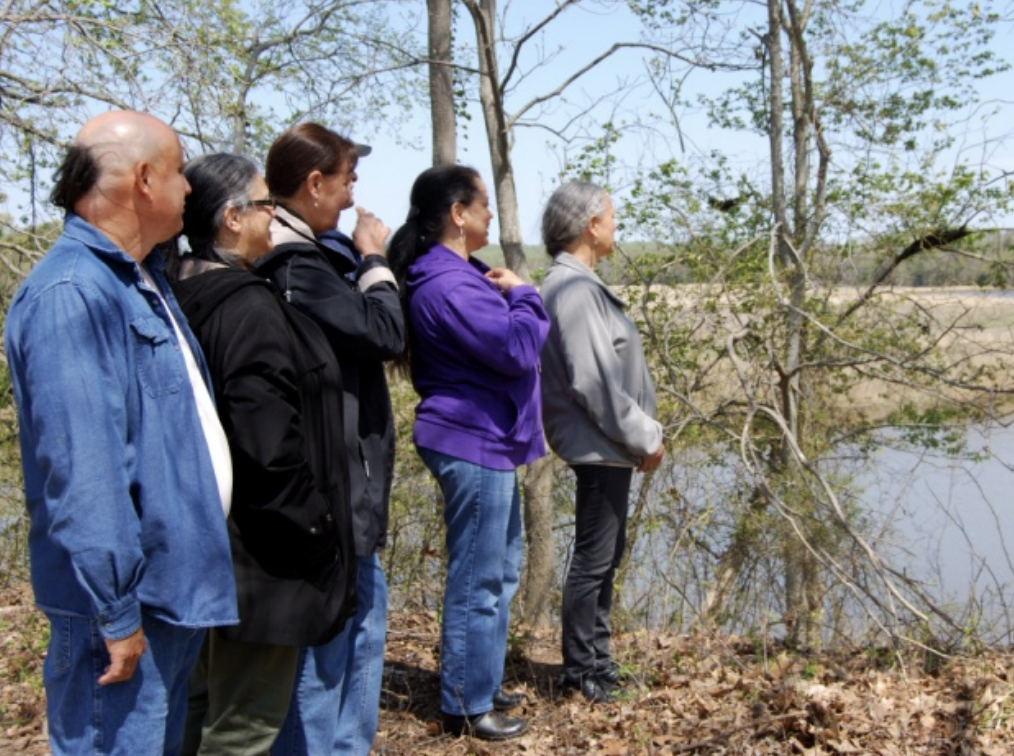
St. Mary’s College of Maryland anthropology professor Julia King and partners produced this Indigenous Cultural Landscape report for the Rappahannock in 2016. Archeological instructors and students have conducted digs at properties owned by the Rappahannock River Valley National Wildlife Refuge, unearthing evidence of Indigenous inhabitance dating back to the 1600s. Click here to read the report.
